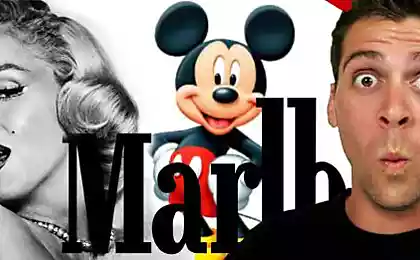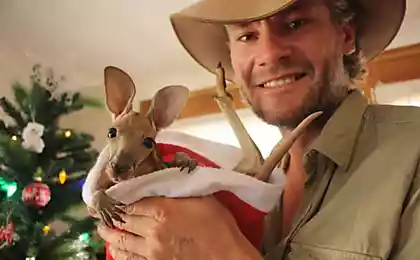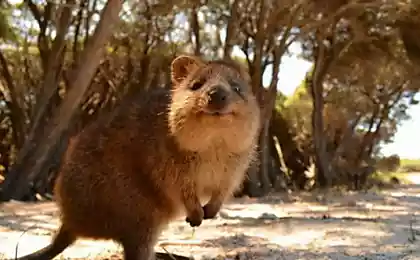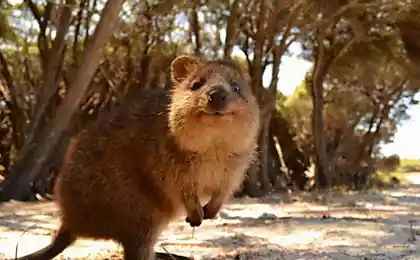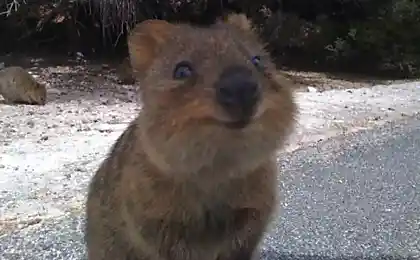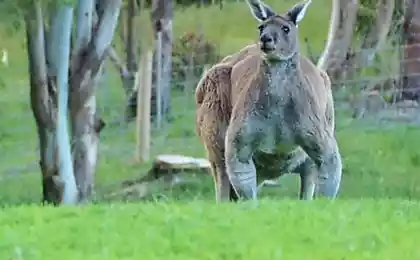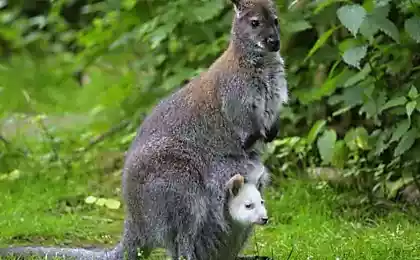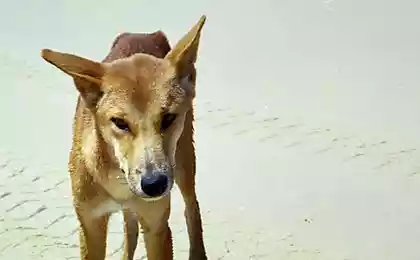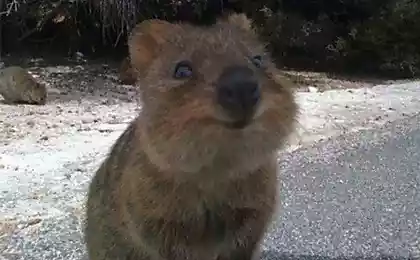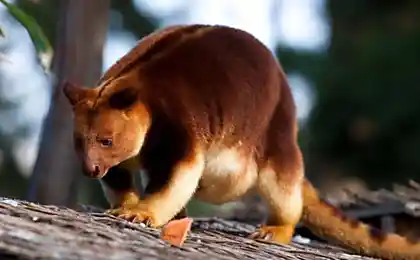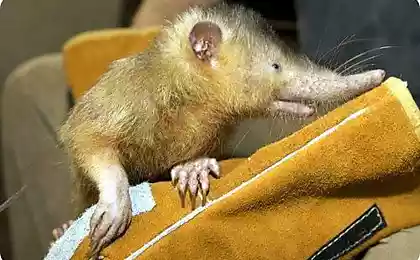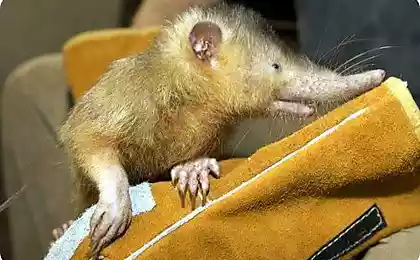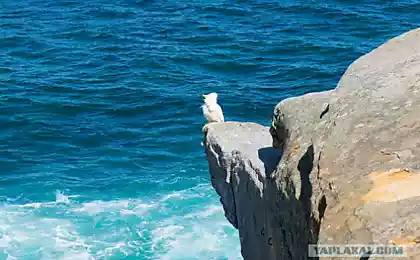492
Quokka or short-tailed kangaroo
It is believed that sometimes a cat can smile, and sometimes lovers they just "credited" smile photoshop and post the collages in the network. Familiar? But did you know that the world really is a charming young one who really smiles without any tweaks? Meet quokka, which belongs to the family of kangaroo.
The history of the discovery of the species short-tailed kangaroo (quack)One of its habitat — the island Rottnest, located a few kilometers from the Western part of the Australian continent. In Dutch the name means "rat's nest". Arrived here VXVII century sailors dubbed the island when it came on shore, the hero of this story is a kangaroo quokka, which first took to be a rat. What to do, he really is very much like a rat. However, it is a decent size – the size of an average dog. But the fact is that the Dutch simply did not know that there were kangaroos, so when I saw that the area was swarming with gray-brown postaciami, exclaimed: "what a rat's nest!". Since then it settled down.
Cocci are not solitary animals, but not paired, do not live in isolation from each other. Author photo: roger smith.
The sizes of quack only slightly inferior to a kangaroo, as a rule, the length of their body does not exceed 50 cm, with the tail not much less than the body length – 30 cm, but the weight of the cocci varies between 3-5 kg.
Enigmatic smile quokka
So quokka smiling.
Many people wonder why quokka smiling. He really live so well? But in fact, when the animal eats, relaxes his jaw muscles. They're kind of resting, and as a result we see the smile with a cheerful beady little eyes. Here's the adorable quokka!
Short-tailed kangaroo (Setonix brachyurus). Author of the photo: Zwarts Erasmus.
But things, unfortunately, things are not so rosy. Animal is quite defenseless: he is neither aggressive disposition, no large fangs, long nails, big size. In addition, the short-tailed quokka is herbivorous animal and likes night life. All this became the reason that in the natural environment it tolerates a lot of harassment by "colleagues" in the animal Kingdom. And the culprit, as you might guess, people. Europeans-explorers, actively exploring the globe, often brought with them animals, typical for the European continent: dogs, cats, foxes and other animals. Alas, almost all of them are enemies of the peaceful quokka, who loses in the battle with them.

Not a rodent quokka, quokka refers to animals dvortzovy marsupials. Author of the photo: Dave N Roach.
Where there is quokka?Today the habitat of a small kangaroo, Rottnest island, bald island and part of Western Australia. No wonder the Red Book notes that the cocci are species, though not endangered, but vulnerable. So the people that indirectly caused the decline of populations in time (or almost time) woke up and began to make active efforts for the salvation of smiling animals. Fortunately, the situation was partially correct. For example, in Australia the area inhabited by these kangaroo is protected. Therefore, cats, dogs, foxes and other predators do not penetrate there.
Interestingly, in the absence of enemies cocci multiply very actively. And that's good news. Even if the population increases rapidly and becomes larger than that provided for a protected area, the "excess" animals are not destroyed, but carefully caught and sent to zoos and breeding farms. Perhaps people still feel guilty that in his time nearly destroyed the smiling kangaroo, so today they have what is called, "under control".
Short-tailed quokka kangaroo tasty plantain.
Features of breeding short-tailed kengurushka, these animals interests the nature of reproduction. Female bears a single young (he is born naked, Yes, and deaf — with a tube in the ears). And although the quokka — an almost perfect mother and for the baby is always in the presence of a warm bag on the belly, sometimes the death of the offspring. In this case, the female gives birth to one cub, but it is not necessary again to mate with the male. Initially in her stomach develops two embryos, and if she begins to feed milk, then after a second the embryo dies. But if lactation does not occur, the second embryo begins to grow and develop. Such a miracle in nature is extremely rare.
Source: natureworld.ru/
Double-edged plate. How we turn healthy foods into harmful ones
Hydros smart irrigation system saves water and reduces bills by 60%
